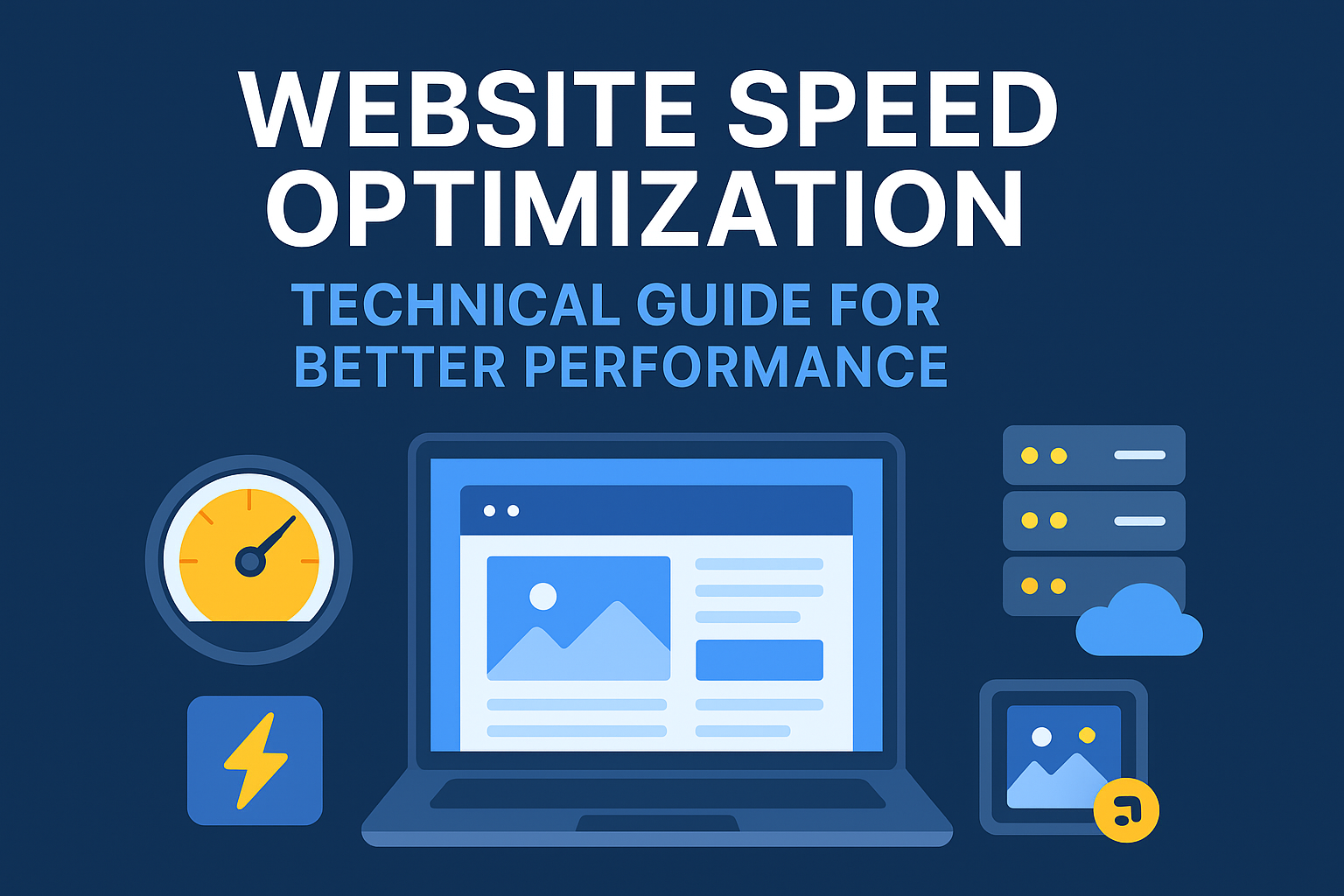Introduction
Website speed is not only a ranking factor but also a user experience driver and conversion booster. A slow site can cost you traffic, sales, and credibility. Here’s a step-by-step technical guide to improve your website speed in 2025.
1. Optimize Images
– Use next-gen formats like WebP
– Compress images without losing quality
– Implement responsive images for different devices
2. Use a Content Delivery Network (CDN)
– Deliver content via the nearest server to the user
– Reduce latency and improve global performance
– Popular options: Cloudflare, Akamai, AWS CloudFront
3. Minify & Combine Code
– Remove unnecessary spaces, comments, and line breaks
– Combine CSS and JS files where possible
– Tools: UglifyJS, CSSNano
4. Leverage Browser Caching
– Store static files on the visitor’s browser
– Reduce repeated loading for return users
– Use proper cache headers for assets
5. Implement Lazy Loading
– Load images/videos only when visible
– Reduce initial page load time
– Native loading="lazy" attribute in HTML5 is supported widely
6. Optimize Server Response Time
– Choose high-performance hosting
– Reduce HTTP requests
– Optimize database queries
7. Enable GZIP or Brotli Compression
– Compress text files (CSS, JS, HTML)
– Significantly reduce page size
8. Reduce Redirects
– Limit unnecessary URL redirects
– Use direct links instead of chains
Conclusion
A fast website ensures better rankings, happier users, and higher conversions. Even small improvements in speed can dramatically impact results.


